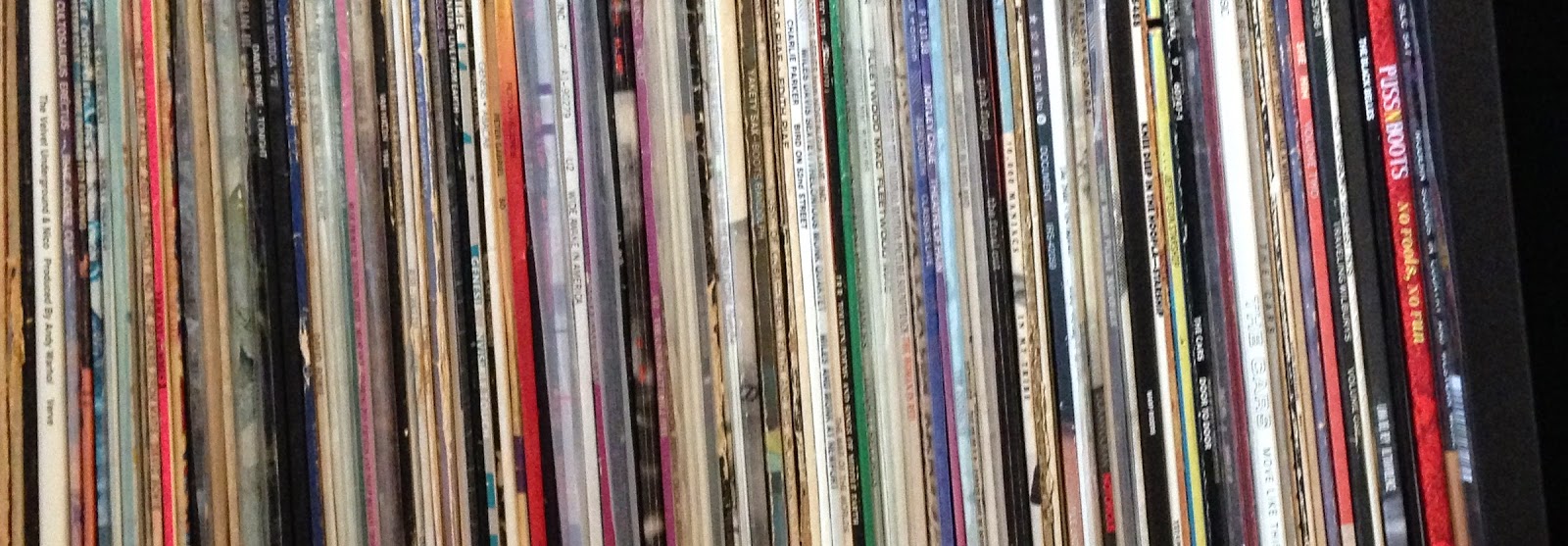I
used to think music fans who insisted on the superiority of vinyl records over
compact discs were just pretentious. Surely, I thought, digital recording
methods are better. That changed, however, when my wife bought me a simple Sony
record player a few Christmases back and I gave vinyl another try.
One
of the benefits was quickly amassing a decent record collection because unless
you’re into collector’s items, used LPs sell for cheap. I bought quite a few
rock records at Vinyl Solution Records in San Mateo, California for about $5 apiece,
and my classical music collection went from zero to 33 1/3 in no time flat as I
picked up armloads as cheap as five for a dollar. A hardbound, six-disc
pressing of Wagner’s Gotterdammerung with
illustrated libretto for $9.99? I couldn’t be happier.
I
scavenged some albums out of the clearance bins at Rasputin Music in downtown San
Francisco just for the artwork, like Astra
by Asia. The illustration by English artist Roger Dean is evocative of every
sci-fi dream I’ve ever had and surely looks better on a 12×12 cardboard sleeve
than it would on a CD insert:
Old
classical album text is a joy to read for its oddly quaint and frequently
curious language. The sleeve for Sergei
Rachmaninoff Plays Concert III, for example, describes Rachmaninoff as “a
triple-threat”--I guess because he was a composer, conductor and pianist--and goes
on to brag about now decades-outdated technology:
“That elusive, yet very real joie-de-vivre is amply demonstrated on this recording, as Sergei Rachmaninoff brings us all-time piano masterpieces in a flawless, noise-free stereo recital made possible by Klavier’s unique process of re-creating great performances of the past using high-fidelity tools and techniques of the present and the future.”
As with the Rachmaninoff album mentioned above, there is something magical to hearing history’s biggest stars of the classical world perform on a recording printed in their own day: Ruggiero Ricci playing Paganini on a Stradivarius, Arturo Toscanini conducting Helen Traubel before an audience many of whose members have since passed away, Maria Callas performing Medea at La Scala when she was still upsetting the opera world, igniting scandals, and recasting the diva mold in her own image. The sounds themselves are a record of the past, and so is the medium.
They’ve
been saying since the Nineties that vinyl is making a comeback, and I finally
believe it. Most new music today comes out in an LP format, often with a free
digital download. Colored vinyl and picture discs are nothing new, but it’s
good to see that record manufacturers haven’t abandoned such collector’s items
in a time when physical releases are an afterthought to the official digital
release or the unofficial leak. My copy of Death’s The Sound of Perseverance (from Amoeba Music in San Francisco’s
famed Haight-Ashbury district) is translucent with blood-like flecks. And recently, I
ran across a Record Store Day-only 10” picture disc single of Rush’s “The
Garden” (Recofan in Shibuya, Tokyo):
No
one, however, has taken their dedication to vinyl further than Jack White. Last
year, Lazaretto broke a 20-year-old record for vinyl sales in an album’s first week of release. White and his
record company Third Man Records designed an “Ultra LP” that plays on three
speeds, has hidden tracks, plays from the center out on one side, and even
projects a holographic angel over the label. He could barely contain
himself when he described it to Conan O’Brien.
But
does vinyl really sound better? When it comes to clear, dynamic sound, the best
I can ascertain after some poking around the internet is that it depends on a
number of factors and there’s a lot of disagreement. Some music is overly
compressed today, which can leave it sounding shallow and tinny compared to the
roomy and rich sound regularly enjoyed last century. There are, however, pitfalls
with vinyl as well, so . . . it’s complicated. Jack White’s Ultra LP boasts no
compression, so perhaps he has found the perfect way to record music.
Another
aspect of vinyl that’s difficult to describe is the pleasure derived from the listening
process. I can locate, purchase,
download and start listening to something on iTunes in the time it takes to remove
an album from the sleeve and lay it on the turntable. Then you have to wait for
the machinery to move the needle into place--unless you’re maneuvering it by
hand. And then, of course, you have to switch sides several songs later. It’s
slow and clunky--and certainly not ideal for concept albums best experienced as
a whole, like Pink Floyd’s Dark Side of
the Moon--but the physical involvement and the decreased speed enhances
enjoyment. You have to stop . . . stop and attend to the music.
It’s
strange to think that a medium stretching back to the 19th Century and
repeatedly challenged by smaller and in some ways better formats would
experience a resurgence in the 21st Century, but that appears to be what is happening. Vinyl records will never be the dominant medium again, but
many like me are discovering that the newest technology is not always the most
satisfying.
















What skills make the Best Window Contractor Orland Park
ReplyDeleteWindow Replacement
A best Window Contractor is one who provides all the general and desire services to their customers.